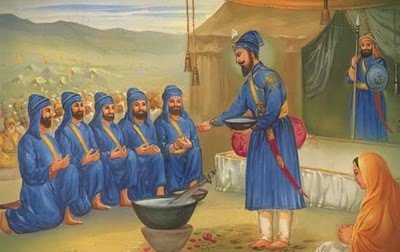As spring breathes new life into the fields and skies, millions around the world gather to celebrate Vaisakhi — a festival that marks both a historical and agricultural milestone.
Observed every year on April 13 or 14, Vaisakhi is much more than just a harvest festival; it symbolizes community unity, cultural pride, and spiritual reflection, especially for the Sikh and Punjabi communities worldwide.
Originating in the heart of Punjab, Vaisakhi was traditionally celebrated as the harvest festival that signified the time when farmers would reap the fruit of their hard labor.
The golden wheat fields sway under the bright sun, and the air is filled with music, dance, and devotion. But Vaisakhi is not only about the land’s bounty. Historically, it holds great religious significance for Sikhs.

In 1699, the tenth Sikh Guru, Guru Gobind Singh Ji, founded the Khalsa Panth — a collective of Sikhs committed to upholding righteousness, equality, and justice.
On this day, Guru Gobind Singh Ji baptized the first five Sikhs, known as the Panj Pyare, instilling in them the values of bravery, humility, and service.
This bold spiritual revolution redefined the Sikh identity, making Vaisakhi an unforgettable cornerstone of Sikh history.
Beyond its religious aspect, Vaisakhi has grown into a symbol of multicultural harmony and inclusiveness. In cities like London, Toronto, Vancouver, and New York, Vaisakhi parades welcome people of all faiths and backgrounds, showcasing the Sikh values of community service and equality.

Today, Vaisakhi celebrations are marked by colorful processions known as Nagar Kirtans, where Sikh devotees march through streets, singing hymns and performing acts of service such as distributing free food to passersby.
Gurdwaras, the Sikh places of worship, are adorned with lights and flowers, while prayers and recitations echo through their halls.
The festival is also marked by the energetic performances of Bhangra and Gidda, traditional Punjabi dances that reflect the joy of a plentiful harvest and the spirit of celebration.
Read More: Pakistan Issues Over 6,500 Visas to Sikh Pilgrims from India for Baisakhi Celebrations
In a world often divided by differences, Vaisakhi reminds people of the power of faith, unity, and gratitude.
It bridges the past with the present — from the fertile fields of Punjab to the bustling streets of global cities — carrying forward a message of peace, prosperity, and resilience.
As communities gather this Vaisakhi, it’s not just a celebration of crops or history, but a reaffirmation of the shared human values that connect us all.
Vaisakhi offers everyone a chance to embrace community spirit and cultural harmony.
Areeba Kanwal is a contributor at The Diplomatic Insight and has passion for International Relations and diplomacy.



